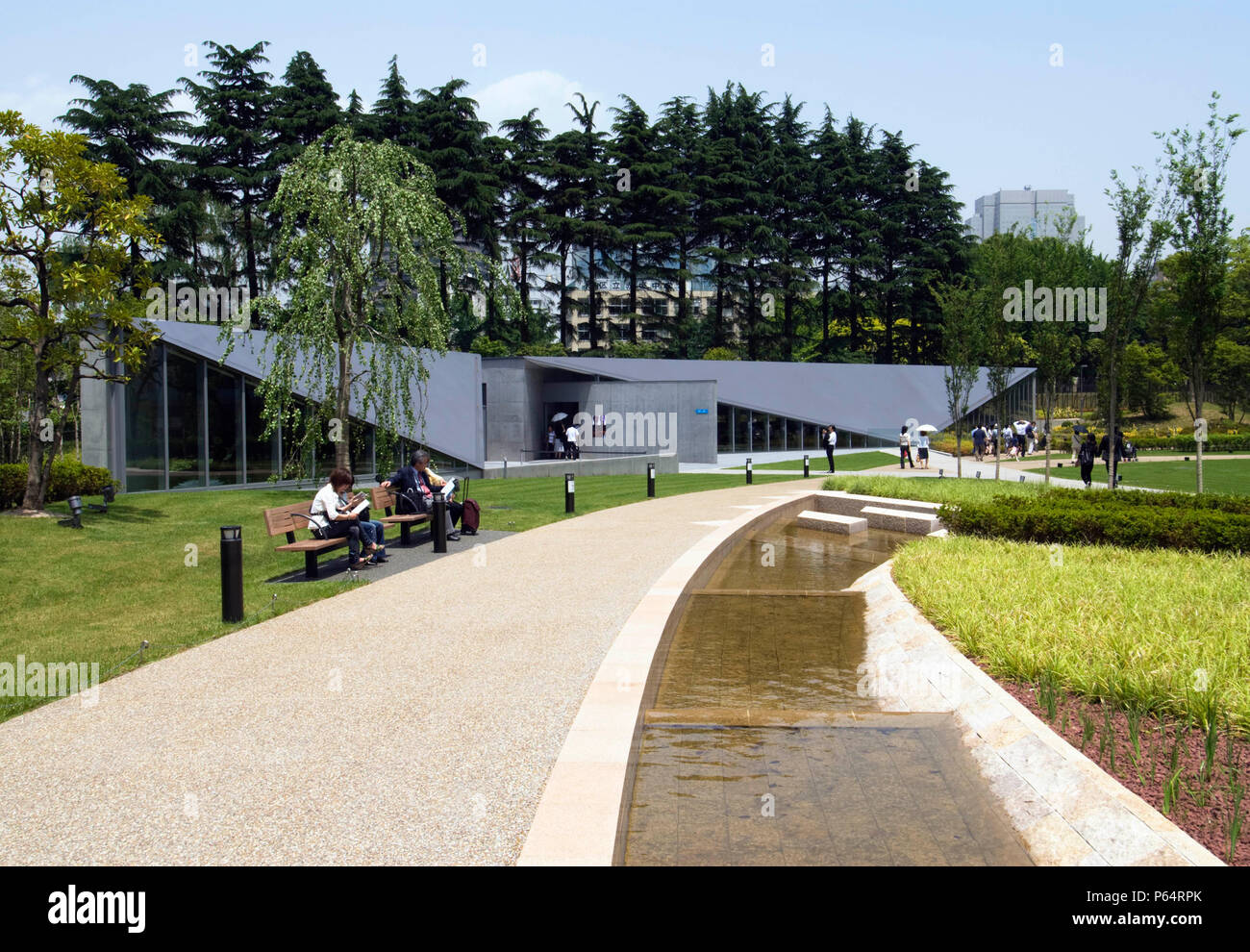Table Of Content

Nestled amidst a serene, open public space, seamlessly integrates with its natural surroundings. The decision to submerge 80% of the building’s floor space underground was a deliberate choice to preserve the tranquility of the environment. The success of this ambitious project is a tribute to the skilled craftsmen who meticulously executed the design without compromise, showcasing the pinnacle of Japanese construction expertise. For those of us that hold a great interest in architecture and design, the Design Sight (read as “two-one two-one design sight”) behind Roppongi's Tokyo Midtown building is certainly worth a visit.
contentsNavigation
No matter your reason for visiting, this list can help get you started in planning your trip to Japan. It’s one thing to see mages of sakura blossoms or Shibuya Crossing, to truly experience Tokyo, you must see it in motion. I took a holiday in Japan after Milan Design Week and was so fortunate to receive some Japan travel tips from Elisabetta before flying to Tokyo. She has plenty of recommendations from her own travels, including this 10 day itinerary to Tokyo and Kyoto.
Building inspired by "A Piece of Cloth"
"Tadao Ando Construction Site of 21_21 'A Hard-Fought Process'" Tadao Ando Construction Site of 21_21'A Hard ... - 21_21 DESIGN SIGHT
"Tadao Ando Construction Site of 21_21 'A Hard-Fought Process'" Tadao Ando Construction Site of 21_21'A Hard ....
Posted: Tue, 28 Jun 2022 00:17:18 GMT [source]
The project then took shape in the form of 21_21 Design Sights, which opened its doors in Roppongi, Tokyo Midtown, in March 2007.Tokyo Midtown is a new development with a range of offices, parks, shopping malls, apartments, restaurants and museums. The area around Roppongi is well known for its many pioneering galleries with contemporary art, architecture and design. In recent years the local art and design scene has been given a boost with the opening of the Mori Museum of Art in Roppongi Hills, followed by the National Tokyo Art Center in Nogizaka and the Suntory Museum of Art in Tokyo Midtown. In the heart of Tokyo, Tadao Ando’s Design Sight Museum stands as a beacon of architectural brilliance and design ingenuity. From its thoughtfully planned interior spaces to the expressive facade that graces the city skyline, every aspect of the museum tells a story of purposeful design.

Experience Design Excellence
Located in the beautiful Midtown Garden, a gateway to Hinokicho Park in Minato-ku, 21_21 DESIGN SIGHT enjoys a prime position where visitors to the garden are seamlessly drawn to the site. It's important to note that operating hours, days of closure, and ticket prices for Gallery 1&2 and Gallery 3 may vary based on the specific programs running. In addition to exhibitions directed by designers, the institution also hosts a wide variety of design-focused activities such as talks and workshops. ‘We live surrounded by a diversity of designs, but we ask how many of them deserve the title of The Original. This exhibition calls attention to products created with genuine verve, fundamental charm, purity, boldness, and strength, each of which we call The Original,’ explained Takahiro Tsuchida. Ando has prioritized accessibility, ensuring that the museum is well-connected to public transportation and pedestrian pathways.
Guide to Suica Cards
21_21 DESIGN SIGHT is situated on a land surrounded by open public space. Our aim was to design a structure asserting itself as a design museum without disturbing the ambience of the natural environment surrounding it. In order to achieve this, we decided to place 80% of the floor space of the museum underground. Indeed, it required highly advanced techniques to process the 54 meter-long plate of steel used as the roof.
Narita to Tokyo - Skyliner Discount Ticket
The aim of 21_21 Design Sight is to promote understanding and interest in design by involving designers, corporate employees, engineers, craftsmen and the general public. The museum organizes exhibitions on the subject of "everyday life" with multidirectional programs such as lectures and workshops. What is unique is that most of these exhibitions are directed by designers.
Diners are greeted by the café’s open kitchen and tables oriented toward the parklike setting. Design mavens arrive at a reception area and then descend to the museum’s main floor and its two galleries by way of Japan’s only trapezoidal elevator or a floating concrete stairway. Echoing the building’s geometric mantra, one gallery is a trapezoid illuminated by indirect light from above. The other is a 16-foot-tall rectangle with a row of columns along one edge. The purpose of the space and its rotating exhibits is to shine a new, inquisitive light on the design consideration and detail behind everyday items and events. Their key motivations are to promote understanding and interest in design for both experts and the general public.
The pieces are accompanied by a graphic display with a large layout of 50 photographs of products. Taken by the photographer Gottingham, the large images lie on the walls behind the products, so visitors can witness details that are difficult to catch with the naked eye. Meanwhile, some of the products are showcased in room-like installations designed by interior designer Yumika Yoshida enhancing visitors’ experience by explaining how the products are used in real life. The exhibition centers on the design engineer Shunji Yamanaka's prototypes and robots, from initial sketches made in collaboration with fellow researchers at his university lab, through to completion. Also included are collaborative works by seven teams of designer-creators and scientist-engineers from different fields.
Influenced by Issey Miyake’s 2003 article advocating for a Japanese design museum, a concept he had shared with Tadao Ando since the 1980s, the project evolved to an interactive space for public engagement in design culture. This evolution led to the opening of 21_21 DESIGN SIGHT in March 2007, a significant addition to Tokyo’s cultural scene. Our aim is to promote understanding and interest in design by involving designers, company people, engineers, craftsmen, and the general public. Tokyo Midtown is the result of a long redevelopment project on the former site of the Defense Ministry in the Roppongi district of Tokyo. Constructed in a public park in the northwest part of this recovered area, this gallery for exhibitions on the theme of design is centered on the international fashion designer Issey Miyake. The two-story, 4,252-square-foot museum is actually one of two trapezoidal buildings that Ando designed for the site.
‘The Original’ doesn’t contain only products from the history of design, but also recent items created in the last two decades, equally well-known and treated as if they were always recognizable. ‘If the dot is influential, it develops into a line or expands into a surface. Later designs continue these vectors, varying or deviating in a process that can continue over long periods. Ultimately, The Original may lose its position, as we forget it as the starting point. Nevertheless, The Original and the power of its originality has fundamentally enriched us,’ he said.
This intentional design choice fosters a sense of community engagement and invites people from all walks of life to partake in the world of design. The 21_21 Design Sight Museum is a design museum located in Roppongi designed by internationally acclaimed architect Tadao Ando.. Most of the exhibitions and workshops here focus on the theme of “everyday life,” and explore the often underappreciated world of design that is hidden in plain sight. Along with Miyake, the graphic designer Taku Satoh and the product designer Naoto Fukasawa acted as directors, and the three directors envisioned a space that would offer a fresh perspective on how to interpret and appreciate design. 21_21 DESIGN SIGHT is a design-focused institution founded by designer Issey Miyake. It opened in March 2007 and is part of the Tokyo Midtown complex in Roppongi .

No comments:
Post a Comment